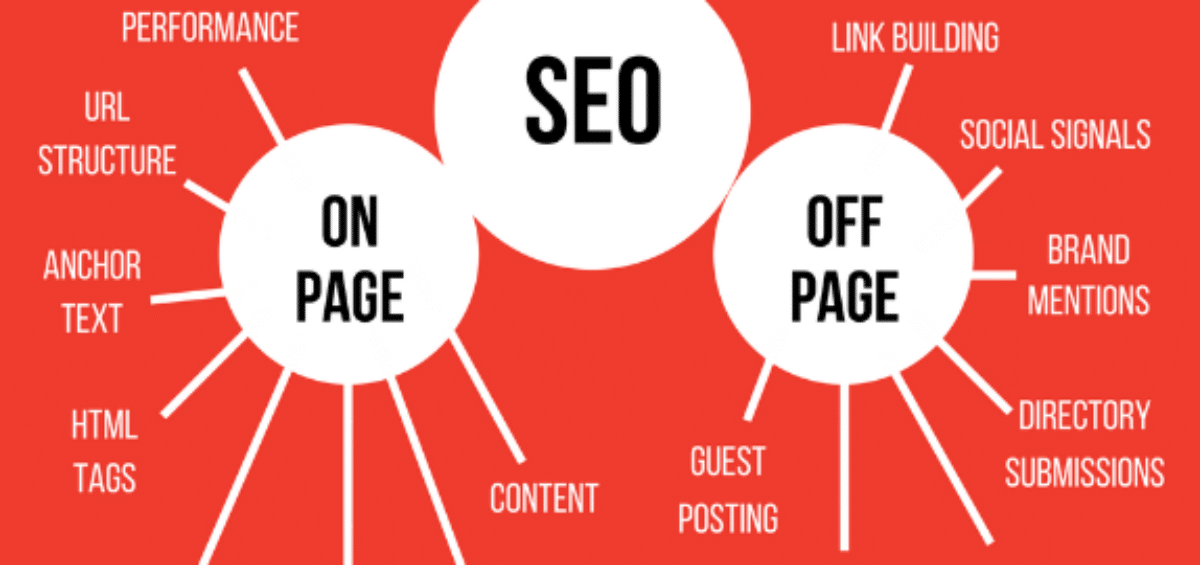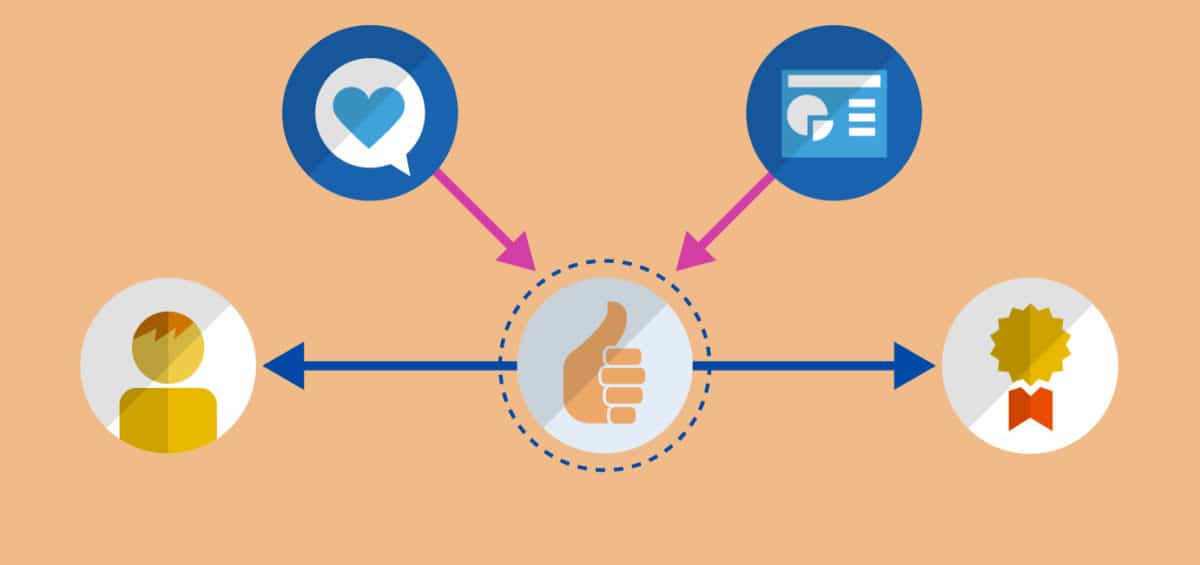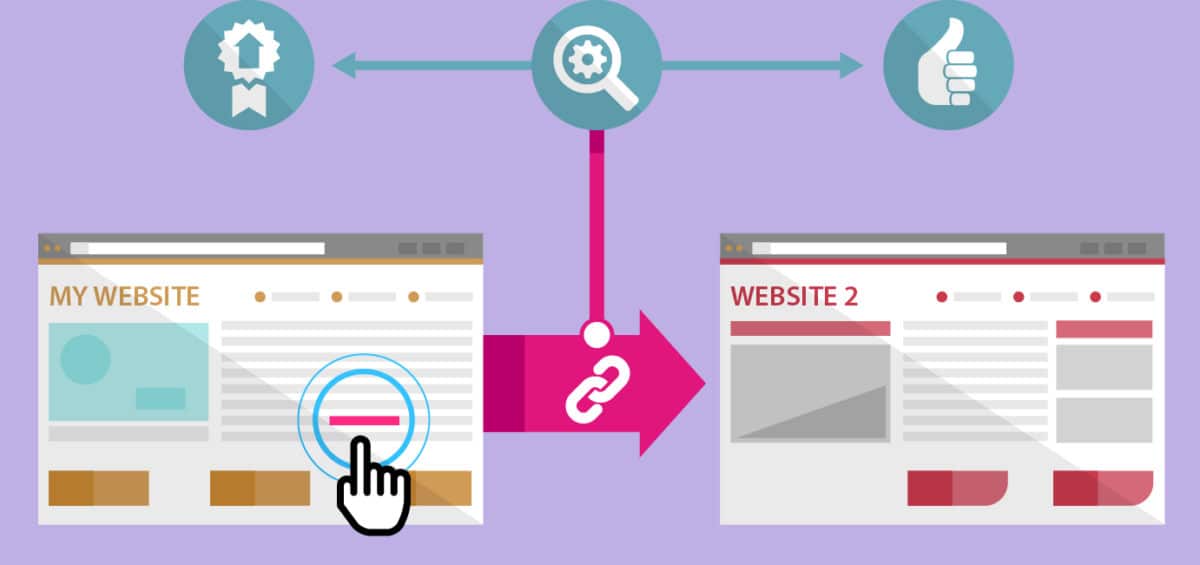“Tech companies” were once simply technology businesses supporting other businesses. They created things like CRM, ERP and storage solutions to boost productivity or improve collaboration. Or they made the hardware that made older administrative tools (typewriters and old-school telephone systems) obsolete.
Many of today’s tech titans—the IBMs, Alphabets (Google), Samsungs and Microsofts—still fit this traditional definition, developing or manufacturing technology products or providing technology as a service.
But an increasing number of today’s “tech companies,” ranging from early-stage startups to high-growth software as a service (SaaS) businesses, make up a robust “tech sector,” defined by Investopedia as largely comprising semiconductors, software, networking and Internet and hardware businesses.
And all of these businesses, however small or large, need an online presence to make their brand known, bring in new customers and take them to the next level of business success.
That’s why tech companies need search engine optimization (SEO). Improving their website’s rankings in search results means understanding what potential customers are looking for. It means understanding the language they’re using to perform those searches. And it means giving them the information they want in the formats they expect.
All of this enables tech companies large and small to bring more traffic to their websites and convert that traffic into customers.
With this guide, we’ll explore SEO as a customer-centric approach tech companies can take to increase their visibility in Google and other search engines. We’ll review the basics of SEO (which apply to any company with an online presence). We’ll talk about some of the specific things tech companies need to know to better connect to the people who are searching the Internet for the solutions they offer.
We’ll look at on-page SEO elements, off-page SEO elements, technical SEO elements, and, finally, we’ll tackle some of the specific aspects of search engine optimization that tech companies need to understand, including keyword research, local SEO, strategies for ranking well in voice search, and tools such as Google Analytics and Google Search Console.
We’ll also introduce you to some of the concepts you’ll need to know about should you choose to hire an SEO services provider to help promote your website.
Let’s get started!
Off-Page SEO Elements
“Off-page SEO” (or “off-site SEO”) is work you do outside of your website that impacts your site’s popularity, relevance, trustworthiness and authority. This work might include building links to your website (backlinks, including citations from your Google My Business listing and other sources), brand mentions (online references to your business) and social signals (a reflection of your brand on social media sites).
Backlinks: The Backbone of the Internet

How long before new links can trigger changes in Google rankings? It takes an average of 10 weeks to push a page a rank higher on Google, according to marketing software company MOZ.
At its most basic level, a backlink (also called an “inbound link”) is a link created when one website links to another. We don’t just call them “links” because you also have “internal links” (links between pages of your website), which we’ll go into later. Using “backlink” and “internal link” clears up any confusion that might arise by simply saying “links.”
If your website is producing linkworthy content that other people want to promote, you should be accumulating backlinks naturally over time. That’s why you should create blog articles and other assets that are the most compelling, informative and interesting in your space. These articles will get shared socially and, fingers crossed, get linked on websites related to your corner of the tech industry.
When we talk about “linkworthy content,” we’re often talking about blog articles. But it can really refer to anything with valuable, sharable information hosted on your website. You can write this content. You can also make videos. You might create an infographic or build a useful tool/calculator (coding skills required, of course)—any helpful asset that might attract links from sites in your industry would count.
These natural backlinks, especially from sites which, themselves, have a high measure of popularity online—something referred to as “domain authority,” are like gold to a tech company’s search engine optimization efforts.
NOTE: In this guide, we’ll refer to the strength of a given website (usually measured by the number of quality links pointed to it and other factors, such as domain age) as its “domain authority.” This is not to be confused with a MOZ metric also called “Domain Authority (DA), which is a proprietary measurement MOZ uses to measure a site’s success. The MOZ metric is similar to other branded measurements used by other SEO companies: SEMRush has “Authority Score” and Ahrefs has “Domain Rating.” It’s important to note that these branded metrics don’t mean anything outside of the context of those companies and their vocabulary. To put it another way, “domain authority” is a general term for how strong your website is. But “a site with a DA of 53” (as measured by MOZ) doesn’t mean anything outside of MOZ’s ecosystem of marketing tools.
Citations/Directory Listings

To be included in most directories, your business needs to have its “name, address and phone” (NAP) information consistently present.
- An official, consistent name. For example, if your business has “LLC” after its name on your website’s contact page, it has to have “LLC” after its name on your citations as well.
- An address. This must be consistent as well. If “Blvd” is written as “Boulevard” on the site, that’s how it needs to be submitted for the automated systems to verify your address.
- A phone number. Again, it has to be the same one on the page for that location.
- A web page. As in, its own page on the site. Picture one website domain for Microsoft, but a unique page for each individual Microsoft division with its own within that site (or dedicated name), such as Xbox Game Studios or Microsoft Research. Yes, each of these divisions can (and should) have their own directory citations!
FYI: Google has made directory listings less and less important in recent years. Therefore, we recommend creating listings in 10 or so directories at first, then coming back and doing 10 or so more in month two, and so on. There are “services” on Fiverr and other online marketplaces where you can pay as little as $10 for a 100 directory citations. Don’t do this. Too many links from low-quality websites actually hurts you instead of helping you, and if you suddenly get hundreds of links in one week you’re at risk of triggering red flags for Google’s search algorithms.
Still, signals provided by listing a client’s business in directories like Yelp and the Yellow Pages provide important local cues to Google. As for non-local (general) citations, you should start with the major data aggregators in the U.S.: InfoGroup, Neustar Localeze, and Factual. There are hundreds, even thousands, of directories, but most of the important ones pull from these three. So you’ll start appearing in other directories just by building profiles here to begin with.
YouTube, Bing Business Listing, Yelp, Foursquare, Facebook, The Better Business Bureau … these are all important places to have business listings. Here is a list of places to build these citations. There are also any number of tech-specific directories, including:
But there is one that is more important than all the others: Your Google My Business listing. Once you’ve claimed and optimized this listing, your information will start to appear to the right of search results when people search your brand and on Google Maps. The dashboard that Google provides tech businesses allows them to respond to customer reviews and see lots of valuable insights (via the “Insights” section, appropriately enough) that can be used to improve your online visibility.
Guest Posting-Blog Exchanges

For example, a tech company would do well to have an article, including a link to their site, published at Gizmodo.com or TechCrunch.com. However, if you aren’t a professional journalist with an established relationship with those publications, it’s not likely they’ll accept and publish a contributed article.
Your next best bet is finding other websites that already have the audience you’re targeting and sending out cold emails to ask if they are interested in a contributed article. Target trade publications, local news sites and industry-specific online publications.
This is a tough process. Typically, you’re doing well if you get a couple of responses per hundred emails. To increase your chance of success, each one has to be customized somewhat. But when you land a guest post on a high-traffic website, it’s worth it. Not only do you get the increased traffic of their readers clicking through to your business website, you also show Google and other search engines that you got a link (a vote of popularity) from a respected website in your industry.
If your tech business is already established, you can find online groups (Slack communities and Facebook groups, for example), where online publishers and SEOs congregate to cross-promote one another.
Speaking of which: Links related to your business will always count more than links on random, unrelated websites. If you’re a tech company specializing in Software as a Service (SaaS), a link from TechRadar will be more valuable to you from an SEO perspective than a link on an unrelated website, even if the unrelated website has the same number of visitors and the same “domain authority” as TechRadar.
Buying Links (“Pay For Play”)

The best advice here is to not do it.
Yes, SEOs were once able to buy hundreds or thousands of links from low-quality websites all over the world, and it worked. So-called “black hat” SEOs still do it, but legitimate businesses don’t do it because the chances of getting caught and getting a manual penalty are high.
Their sites would start to rank almost immediately. Google and other search engines have gotten smarter and this no longer works.
Except … (you knew there would be an “except,” right) …
Some online publications accept “paid placements” for their guest posts. We believe that Google is catching on to this as well, but for the time being, there are some high-profile websites accepting guest submissions on a “pay to play” basis.
Another exception to the “never buy links” rule would be to get a link that you wouldn’t otherwise have without some kind of sponsorship. Say, for example, your local business sponsors a little league baseball team. Not only would you get your business name in the game programs, you might also get a link on the team’s website if they have one. If you belong to a civic organization (Moose Lodge, Chamber of Commerce, church, etc.), reach out to those organizations’ webmasters and ask for a link on their member page.
Why would a tech company care about a link on a baseball team’s website? Didn’t we say that industry-specific links were the most valuable?
Yes, they are. But if you have a local tech company (and we’ll be talking about local SEO in depth later), you should also be concerned with links from websites that are associated with your city and your geographic region. Telling search engines that you are a member of a local community is a great way to start appearing on geographic searches, local map searches.
Put another way: You’re a sponsor for the local school’s Christmas party? Yeah that “paid” link is fine. You’re an active member of the local Rotary club? Yeah that’s fine too. Chamber of Commerce? Member of a professional association? Go check that box too. Local link-building without online content is all about hustle and being creative.
Relevance

Anchor Text
Whether you’re optimizing the content on your company blog or on your service pages, your links should help users find out more about a specific topic. As we discussed, a hyperlink that you add to your site can either point to other pages on your own site (an internal link) or to pages on other websites (an external link). In both cases, by providing meaningful anchor text, you help search engine crawlers and users understand what the target page is all about.
The anchor text is the word or words that have the actual link (the “a href” tag). Anchor text is the part of a link that is visible to users. These links should be easy for users to identify, so make sure the link color is different from the text color, for example.
Aside from appearance, you should use a variety of anchor text types. An “exact match” anchor text link would be somethin like “Read more about our data privacy SaaS solutions,” where “data privacy SaaS” is linked and the page you’re linking to has “data privacy SaaS” as its primary/focus keyword.
Avoid using generic words like ‘“click here.” These words don’t give enough clues to search engines about what the linked page is about.
Don’t stuff your anchor text full of keywords. That’s an old-school SEO trick that hasn’t worked in a LONG time. You should also never use text that has no relation to the linked content. Tricking your users into clicking something other than what they expect is great for Rick Rolling, but terrible for a tech company’s SEO and content marketing!
For external links that link back to your website, exact match keywords are good—within reason. Of course, you don’t always have control over how other websites link to you. But if you have a relationship with another business that is linking to you, ask them to link to you using a variety of anchor text types, including partial match, page title, and brand name.
Dofollow vs. Nofollow
When a highly ranked website links to a lower ranked site, they are usually boosting the value of the lower ranked website’s (in the eyes of search algorithms). If your business website gets a link from a high-authority website like TechCrunch or CNET, it will usually boost your authority and your rankings.
But not all backlinks are created equal. Let’s look at some of the factors that you should consider as you embark on a linkbuilding campaign for your tech company.
A “normal” link passes PageRank signals (more info on PageRank in a minute) to the page being linked. Some SEOs refer to these signals as “link juice,” which sounds kind of gross if you ask us. Still, these links can be called “dofollow” links, whereas a “nofollow” link blocks credit from being passed to other websites.
A dofollow link is the default (there is no need for a tag in the code). A nofollow link has a small tag (rel=” nofollow”) in the code. Human users can still interact with a nofollow link. These links simply allow publishers to tell Google not to count links to pages as “votes” in favor of that content.
Is there still value in getting a “nofollow” link on another site? Absolutely! In fact, most sites gain nofollow links naturally over time. If you don’t have any nofollow links to your site, that may be a clue to Google and other search engines that something spammy is going on.
Websites can use nofollow links to link to information that may be valuable to readers without vouching for the website. Many sites use dofollow links when they’re paid to link to other websites. If they allow comments on their site, they know site visitors will drop links in those comments—this is another example of when you’d want to “nofollow” a link.
The biggest news websites (think Cnn.com) always use the “nofollow” attribute on all their outbound links. This means that a link on their site has no PageRank value. However, links from these sites still have high value because of the size of their audience.
PageRank
PageRank is a way to evaluate web pages by measuring the quantity and quality of backlinks they have. As we’ve seen, a high number of backlinks tells search engines that the page that is being linked to is valuable.
The concept of “PageRank” came from Larry Page and Sergeyi Brin, who developed Google’s original algorithm in 1997. In principle, a page (not a website, but a specific page) that has more backlinks than another will (all else being equal) rank higher.
Thanks to shady SEO practices that abused link acquisition methods, Google no longer publicly shows the PageRank of a website. Generally, however, you can assume that the websites of cities, universities, and established charitable organizations generally have a high PageRank and (consequently) yield the best links.
As an SEO or someone doing SEO for a tech company you don’t need to go out of your way to optimize your website for PageRank. While there are services that promise to increase PageRank, they are often ineffective or risky (spammy). The websites with the best content will attract high-quality editorial backlinks and earn PageRank over time.
Brand Mentions
Brand mentions are online references to your busines. These mentions of your brand, company, or product may show up naturally in reviews, blog posts, social media posts, and news articles. It’s important to monitor them, join in where conversations about you are happening online, and address any negative mentions before damage is done.
You can use Google Alerts and other tools to search for mentions of your brand (including your company name and the name(s) of any patented products or solutions you offer) on social media and on other websites. You’ll want to respond on the social media posts; as for the website mentions, you’ll want to ask the site owner they’d be willing to add a “dofollow” backlink to your website.
Social Signals

As for Bing, the world’s fifth-largest search engine (behind Google, YouTube, Amazon and Facebook) freely admits using social signals. You shouldn’t ignore Bing, by the way; their search algorithm is a huge part of voice search, which we’ll discuss later. Amazon’s Alexa and Microsoft’s Cortana (the second most popular virtual assistant, behind Apple’s Siri) draw web search results from Bing.
Make sure you’re consistently presenting your NAP (name, address and phone) in the same way you listed it in your online citations/directory listings. Also, be sure to include a correct link to your URL in all your social media profiles. This means getting it correct down to the letter (HTTP versus HTTPS and WWW versus non-WWW).
Reviews

For most businesses, reviews on Facebook, Google and Yelp are important. For tech companies, tech-specific reviews from Clutch are also well worth your time.
We’ll talk more about reviews in the Local SEO section, since they’re most important to tech companies that operate with a specific geographic area. But for now it’s important to remember a couple of things:
- Reviews count for 10.3 percent of Google’s overall ranking factors. Once a business gets five or more reviews, they start to rank higher in Google searches.
- Responding quickly to bad reviews is important. It’s not about changing the reviewer’s mind (although they may edit or remove a bad review once your business responds)—it’s about showing everyone who sees the review that you take the time to respond to problems.
- To manage your reviews from the Google My Business dashboard, you can click into an individual listing, and from there you’ll see “Reviews” on the menu to the left of the page.
One more thing: Don’t put a link to your Yelp profile on your site; evidence suggests Yelp views this as review solicitation, which increases the chances of your reviews not appearing on their site. You’re better off asking people who already have a Yelp account to review you directly, once you’re sure they’re happy enough with your business to want to share the experience with others.
Another thing you can do is create a shortlink to send to satisfied customers. The shortlink will take them directly to where they can write a review. Employees can add the shortened URL to their email signatures, send it directly to longtime customers, print it on business cards, and more. You might even print it on sales receipts.









